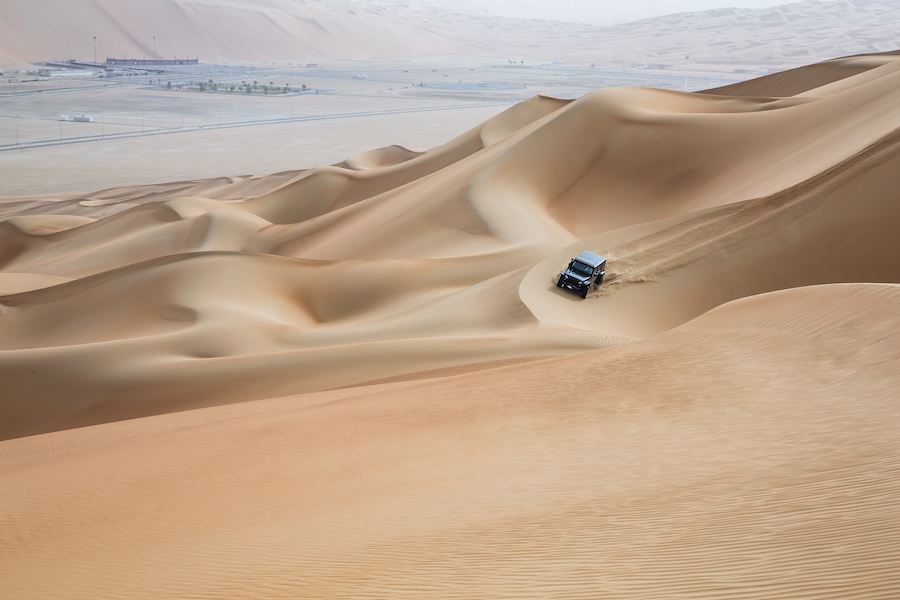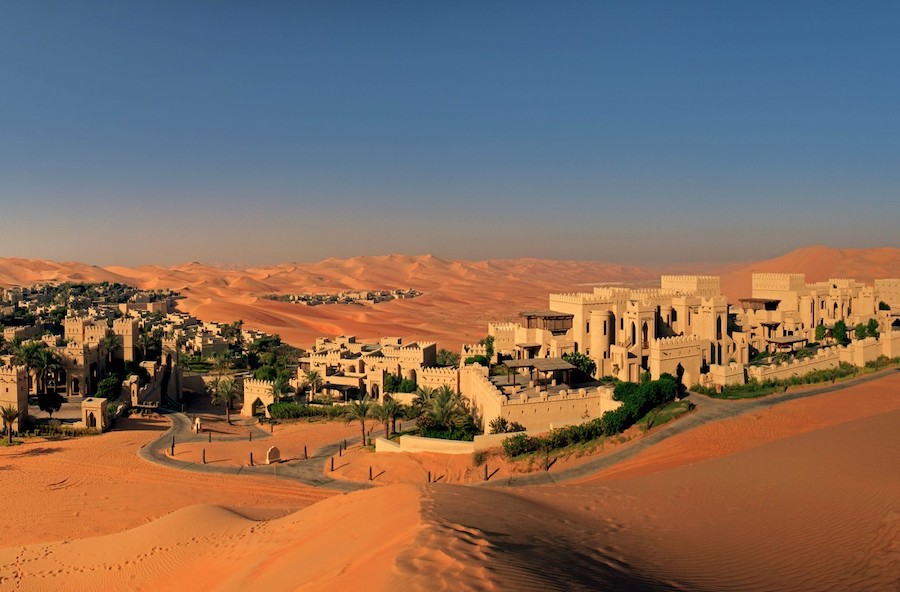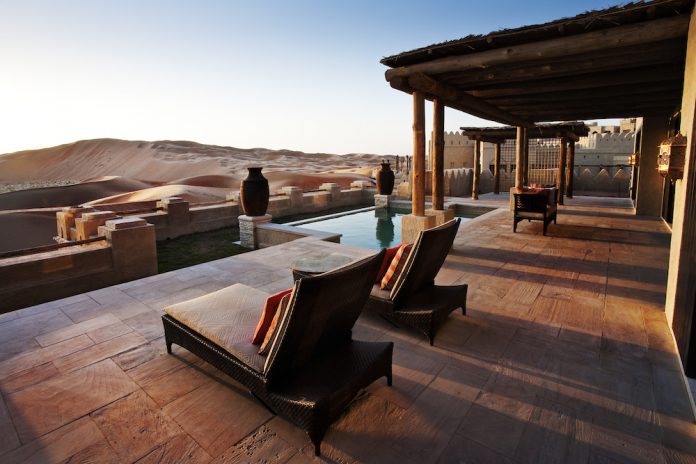DUBAI: The colors change depending on which direction you’re facing or what time of day it is. The shifting sands ripple in undulating, multi-colored waves — rusty oranges, wisps of silver, shimmering gold. The colors depend on the minerals in the sand, but also on the effects of the ever-present sun, beating down on one of the world’s harshest and most desolate landscapes.
This is the Rub’ Al-Khali, or Empty Quarter. At 650,000 square kilometers, this giant desert is larger than France, and straddles four countries — Saudi Arabia, Yemen, Oman, and the UAE. It is the largest uninterrupted sand desert in the world.
Of course, given that the majority of the Gulf region consists almost exclusively of desert, that may not sound especially impressive. But comparing this vast swathe of towering dunes to any other desert is to do it a significant disservice. Not least because, on the UAE side, it is also home to the magnificent Qasr Al Sarab hotel.

Nestled in a desert valley with soaring dunes to the left and right and salt flats in front, the hotel announces itself with stone towers, grand trellises and water features, resembling an old Arabian fortress town.
Qasr Al Sarab is basically the only structure for miles around — a lone ship adrift in a sea of sand. So the hotel must sustain itself, given it’s two hours from Abu Dhabi and about 45 minutes from any other notable township. The hotel recycles all its water, has its own sewage plant, and even grows its own fruits and vegetables in a desert greenhouse.
The hotel, which reopened on August 15 having been closed since the start of the COVID-19 pandemic, has been busy preparing for the return of guests. Especially those from the local market. There’s a newly refurbished gym (complete with Technogym equipment), new kid’s club and a revamped pool area. The on-site restaurants offer traditional options — via a Bedouin-style outdoor, tented area —as well as more modern ones in the rooftop steakhouse, Suhail.

The hotel library is stocked with historic books and information on the landscape just beyond the windows. It’s the perfect place to read up on the Empty Quarter’s ecosystem: the fearsome and the tame alike. Although it seems devoid of life at first glance the desert is actually home to plenty. Keep your eyes peeled for snakes, sand foxes, gazelles, birds, scorpions and camel spiders. The Abu Dhabi government has been working on an oryx rehabilitation program, releasing Arabian oryx into the protected area near the hotel.
And the hotel itself hosts numerous animals. A small population of Arabian horses and camels take guests on treks through the dunes at sunrise, while six Saluki dogs, traditionally trained for hunting by nomadic Arabian tribes, perform shows with the hotel’s falcons. But if you’re really looking for something to get your heart racing —and stomach churning — head out for some dune bashing. It is, of course, a favored pastime wherever you are in the UAE, but the size of the dunes in the Empty Quarter means the experience is even more hair-raising than usual. Any rollercoaster will forevermore pale in comparison to an hour in a Nissan Patrol with skilled driver Waris, one of the most experienced dune bashers in the area. He was on location with the crew of “Star Wars: The Force Awakens” and was also charged with taking the new Bentley Bentayga for a spin to test its capabilities.

After a lie down to recover, evening entertainment comes in the form of pitching up under the stars. The vastness of the night sky seems more obvious here, the stars clearer than anywhere else in the country — a particular shock to city-dwellers so unaccustomed to the wonders of a clear sky. Here, the peace and tranquility seem almost otherworldly; just as explorer Wilfred Thesiger described the area 70 years ago in “Arabian Sands,” when he wrote: “It was very still with the silence which we have driven from our world.”
It may have gained five-star lodgings since then, but this magnificent desert remains fundamentally unchanged.


